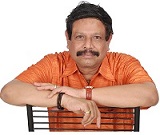“Explore the historic Kesavananda Bharati case as it marks 50 years in Indian constitutional law. Understand the ‘basic structure’ doctrine, limits on Parliament’s power, and the lasting impact on constitutional principles. Supreme Court launches dedicated webpage for comprehensive law research.”
Supreme Court launches dedicated webpage on Kesavananda Bharati judgment to help with law research.
1. The seminal ruling in Kesavananda Bharati, in which the Supreme Court laid down the “basic structure” doctrine on the limits of Parliament’s power to amend the Constitution, completes 50 years on Monday.
2. THE KESAVANANDA BHARATI CASE IN BRIEF
2.1. Main petitioner, Kesavananda Bharati, challenged the Kerala land reforms legislation in 1970, which imposed restrictions on the management of religious property.
2.2. The case was challenged under Article 26 concerning the right to manage religiously owned property without government interference.
2.3. The Kesavananda Bharati case was heard by a bench of 13 judges of the Supreme Court of India, making it the largest bench in Indian legal history.
2.4. The bench comprised then Chief Justice of India SM Sikri, Justices JM Shelat, KS Hegde, AN Grover, AN Ray, P Jaganmohan Reddy, DG Palekar, HR Khanna, KK Mathew, MH Beg, SN Dwivedi, BK Mukherjea and YV Chandrachud.
2.5. The bench was established to hear a case that raised crucial constitutional questions regarding the Parliament’s authority to AMEND the Constitution.
2.6. It took six months to hear arguments and deliver the final verdict.
2.7. The 703-page judgment, spread over 11 judicial opinions, established a permanent bulwark against tyranny and dictatorship.
2.8. By a 7-6 verdict, the SC ruled that Parliament could amend any part of the Constitution if it did not alter or amend the BASIC STRUCTURE or essential features of the Constitution.
2.9. In addition, the ruling said, the superior courts will have the last word on a case-by-case basis to decide the contours of basic structure.
2.10. The minority, however, in their dissenting opinion, were wary of giving the Parliament unlimited amending power. 2.11. The judgment listed some basic structures of the Constitution as:
2.11.1. Supremacy of the Constitution
2.11.2. Unity and Sovereignty of India
2.11.3. Democratic and Republican form of government
2.11.4. Federal Character of the Constitution
2.11.5. Secular Character of the Constitution 2.11.6. Separation of power
2.11.7. Individual freedom
3. Over time, many other features have also been added to this list of basic structural features. Some of them are:
3.1. Rule of law 3.2. Judicial review
3.3. Parliamentary system
3.4. Rule of equality
3.5. Harmony and balance between the Fundamental Rights and DPSP
3.6. Free and fair elections
3.7. Limited power of the parliament to amend the Constitution.
3.8. Power of the Supreme Court of India under Articles 32, 136, 142 and 147
3.9. Power of the High Court under Articles 226 and 227
3.10. The SC can strike down any law or amendment that violates these principles on the grounds that they distort the basic structure of the Constitution.
4. Most importantly, seven of the thirteen judges in the Kesavananda Bharati case, including Chief Justice Sikri, who signed the summary statement, declared Parliament’s constituent power (the power to amend the Constitution) was subject to inherent limitations.
4.1. Parliament could not use its amending powers under Article 368 to ‘damage,’ ’emasculate,’ ‘destroy,’ ‘abrogate,’ ‘change,’ or ‘alter’ the ‘basic structure’ or framework of the Constitution.
5. It is necessary to point out the subtle difference that exists between two kinds of functions performed by the Indian Parliament:
5.1. it can make laws for the country by exercising its legislative power and
5.2. it can amend the Constitution by exercising its constituent power. Ramdas Iyer 24.04.2023 Monday





